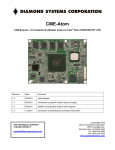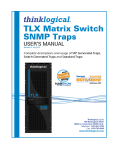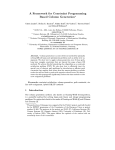Download Manual
Transcript
CERN PH-ESE-BE GLIBv3 user manual version 1.09 2013.02.19 GLIB project homepage: https://espace.cern.ch/project-GBLIB/public Contact: [email protected] 2 GLIBv3 User Manual - draft Document History • V1.09, 2012.02.19: Updated documentation for release_v3.1.0 and above. • V1.00, 2012.12.20: First draft in the document history. GLIB team Manoel Barros Marin, Sophie Baron, Vincent Bobillier, Stefan Haas, Magnus Hansen, Markus Joos, Patrick Petit, Francois Vasey & Paschalis Vichoudis. v1.09 GLIBv3 manual - draft 3 Table of Contents Document History ................................................................................................................................... 2 GLIB team ................................................................................................................................................ 2 Table of Contents .................................................................................................................................... 3 1. INTRODUCTION ............................................................................................................................... 4 2. ARCHITECTURE ................................................................................................................................ 7 2.1 2.1.1 PLL & Reset controller ..................................................................................................... 8 2.1.2 Gigabit Ethernet and IPbus ............................................................................................. 8 2.1.3 SoC bus ............................................................................................................................ 9 2.1.4 System Registers ........................................................................................................... 10 2.2 3. User Logic .............................................................................................................................. 14 2.2.1 SRAM ............................................................................................................................. 14 2.2.2 FMC I/O ......................................................................................................................... 16 2.2.3 Wishbone bus ............................................................................................................... 16 2.2.4 GBT-based links ............................................................................................................. 17 How to use the GLIB...................................................................................................................... 22 3.1 Hardware .............................................................................................................................. 22 3.1.1. Jumpers ......................................................................................................................... 22 3.1.2. Switches ........................................................................................................................ 23 3.1.3. Powering ....................................................................................................................... 24 3.1.4. Configuration ................................................................................................................ 24 3.1.5. Reset ............................................................................................................................. 25 3.1.6. RJ45 socket .................................................................................................................... 25 3.1.7. Serial Number ............................................................................................................... 25 3.1.8. LEDs ............................................................................................................................... 26 3.2 4. System Core ............................................................................................................................ 8 Firmware/Software ............................................................................................................... 27 REFERENCES .................................................................................................................................. 29 APPENDIX A: GLIB v3 bench VTRx reference design ............................................................................. 31 v1.09 4 GLIBv3 User Manual - draft 1. INTRODUCTION The Gigabit Link Interface Board (GLIB) [1] is an FPGA-based system for users of high speed optical links in high energy physics experiments. The GLIB serves both as a platform for the evaluation of optical links in the laboratory as well as a triggering and/or data acquisition system in beam or irradiation tests of detector modules. The major hardware component of the platform is the GLIB Advanced Mezzanine Card (AMC) [2] that can be used either on a bench or in a μTCA [3] crate. The GLIB AMC is based on a Xilinx Virtex-6 FPGA with Multi-Gigabit Transceivers (MGT) operating at rates of up to 5 Gb/s. This performance matches the specifications of the Gigabit Transceiver (GBT) [4] and Versatile Link [5] [6] projects with targeted data rate of 4.8 Gb/s. Figure 1-1 illustrates the baseline configuration of a GBT - Versatile Link - GLIB system is shown at the top. Front-end (FE) ASICs are electrically connected to the GBT ASIC through e-links [7] while the GBT high-speed serial data-streams are converted to/from the optical domain through the Versatile Transceiver [8]. At the other end, the GLIB system converts data to/from the optical domain, implements the GBT data transmission protocol [9] and codes/decodes the user payload at the link back-end. An alternative configuration, useful for intermediate prototyping, is shown in Figure 1-2 with one GLIB interfacing to FE ASICs and VTRx, thus emulating the GBT, and a second GLIB at the back-end. Figure 1-3 shows a picture of the production version of the GLIB AMC, highlighting the two high-pin count (HPC) FMC Mezzanine Card (FMC) [10] sockets. The presence of the HPC FMC sockets is a big advantage since they provide additional user-specific I/O, high-speed transceivers and clock lines that can be used to extend the I/O connectivity of the GLIB AMC. For that reason, most of the auxiliary boards developed for the GLIB platform adopt the FMC format. The purpose of the auxiliary boards is to enhance the GLIB AMC compatibility with legacy and future triggering and/or data acquisition interfaces as well as its I/O bandwidth when in bench-top operation. . Figure 1-1: A GBT - Versatile Link system with the GLIB at the back-end. Figure 1-2: A GLIB interfacing to FE ASICs and VTRx with a second GLIB at the back-end. v1.09 GLIBv3 manual - draft 5 Figure 1-3: Picture of the GLIB AMC, highlighting the two FMC sockets Figure 1-4: The block diagram of the GLIB card v1.09 6 GLIBv3 User Manual - draft Figure 1-5 shows a detailed diagram of the clock circuitry which is an essential part of the system. The MGT reference clocks and fabric clocks are shown in red and black, respectively. Figure 1-5: The clocking circuitry It is important to mention that each MGT Reference clock (REFCLK) can be used to clock the MGT of its neighbouring MGT Quads (see Figure 1-6). For instance, the REFCLK0 of the MGT 114 can also clock the MGT quads 113 and 115. Details about the Virtex-6 clocking resources can be found in Figure 1-6. Figure 1-6: The MGT quads v1.09 GLIBv3 manual - draft 7 2. ARCHITECTURE Figure 2-1 illustrates the FPGA firmware architecture of the GLIB that is organized in two main parts, the system_core and the user_logic. Figure 2-1: Firmware architecture. The system_core firmware instantiates a simple IP-based control protocol (IPbus) designed for controlling xTCA-based hardware over Gigabit Ethernet that includes all basic transactions needed for this purpose (bitwise, single register and block transactions) [10]. The system_core also includes all interfaces to the on-board hardware e.g. I2C communication with the on-board temperature sensors and the serial memory, SPI communication with clock synthesizer, SRAM interface with the two (operating at up to 160MHz) etc. In order to interface the GLIB with GBT protocol based systems, the GLIB firmware distribution provides GBT Hardware Description Language (HDL) modules [13] and associated optional Gigabit Transceiver (GTX) ready to be instantiated as is inside the user_logic. v1.09 8 GLIBv3 User Manual - draft 2.1 System Core 2.1.1 PLL & Reset controller The system_core contains a PLL which is clocked by the on-board 125MHz oscillator. The PLL provides a 62.5MHz clock which is used for the internal bus of the system (see §2.1.3) as well as a 125MHz clock for the Gigabit Ethernet MAC instantiations. The Reset controller generates a master reset pulse in the following cases: - During power up (detected by the Voltage Supervisor) When the reset button is pressed (detected by the Voltage Supervisor). When the FPGA firmware is reloaded (internal logic). When the above mentioned PLL is not locked. Both clocks (62.5MHz and 125MHz) as well as the reset pulse are forwarded to the user_logic block. 2.1.2 Gigabit Ethernet and IPbus For the Gigabit Ethernet links, MAC cores are instantiated. In the case of bench-top operation, the MAC core is configured as 1000Base-T in order to communicate with the external PHY. In the case of crate operation, the two MAC cores (AMC P0 & P1 1) are configured as 1000Base-X for interfacing with the Gigabit Ethernet Switch carried on the crate’s MCH. For every MAC core, an IPbus endpoint is also instantiated. The IPbus system allows the control of hardware via a ‘virtual bus’, using a standard IP-over-gigabit-Ethernet network connection. The IPbus specifies a simple transaction protocol between the hardware and a software controller, which assumes an A32/D32 connection to slave devices connected to the hardware endpoint. The current IPbus firmware implementation is using a UDP/IP protocol and a simple synchronous SoC bus [12]. This protocol is based upon the Wishbone SoC protocol [13], and is compatible with Wishbone cores. However, there are two important differences: - The master is not required to explicitly deassert strobe between cycles. However, it is guaranteed to deassert strobe or begin the new cycle on the clock cycle following ack. - Slaves are not allowed to tie ack high, and must deassert ack on the same clock cycle that strobe is deasserted. However, it is allowed to tie ack to strobe, if a zero-wait-state response is always possible. Timing diagrams of read and write transactions for a slave with and without wait states are given below. The first diagram illustrates a write cycle to a slave with one wait state; the bus idle for two clock cycles; then a read to a slave with zero wait states. The second diagram illustrates a ReadModify-Write transaction with a slave with zero wait states, followed immediately by two reads from a slave with one wait state. The reason of developing this custom SoC bus is to increase the bus efficiency by minimizing the dead-time. Please note that IP & MAC addresses are defined in the user_logic block. 1 The generation of AMC P1 MAC core when in crate mode is optional v1.09 GLIBv3 manual - draft 9 Figure 2-2: IPbus read/write transactions [12] 2.1.3 SoC bus As mentioned in §2.1.2, there is a case where more than one MAC/IPbus cores are instantiated. For deciding which Gigabit Ethernet link will take over the bus, an Arbitration module is instantiated between the IPbus cores and the bus fabric. The bus fabric redirects the bus to only one of the slave devices instantiated by decoding the address (based on the memory map of Figure 2-3). The system_core instantiates various system slaves e.g. the system registers (base address = 0x00000000), SRAM1 (base address = 0x02000000) and SRAM2 (base address = 0x04000000). Additionally, the system_core allocates a large memory space for user slaves; IPbus slaves (base address = 0x40000000) and Wishbone slaves (base address = 0x80000000) that can be added to the user_logic. Figure 2-3: Memory map v1.09 10 GLIBv3 User Manual - draft 2.1.4 System Registers Table 2-1 shows the 16 registers that are currently implemented into the System Registers HDL block providing their address, a short description of their functionality and their type (Read-Write or Readonly). The 4-byte Board_ID register, as its name suggests, provides an identifier of the GLIB board (0x474C4942). When the 4 bytes of the identifier are represented in ASCII characters, the identifier corresponds to the word “GLIB”. Table 2-2 shows how the register is organized. The 4-byte System_ID register declares GLIB’s mode of operation (bench-top or crate). For bench-top mode, the register contains the value 0x4C414220 that corresponds to “LAB” when the 4 bytes are represented in ASCII format. When in crate mode, the register contains the value 0x75544341 that corresponds to “'uTCA”. Table 2-3 shows how the register is organized. The Firmware_ID register contains the date (YY/MM/DD) and the version number of the firmware (major.minor.build). The register TestReg is used only for testing the read/write transactions since it is not connected to the system_core logic. The Ctrl register (Table 2-5) is used to configure the clock circuitry (Figure 1-5). The register Ctrl2 (Table 2-7) is used for loading firmware from the Platform Flash on demand. Table 2-1: System Registers Addr Name Description Type 0x00 Board_ID The board identifier code RO 0x01 System_ID The system identifier code RO 0x02 Firmware_ID The firmware date and version number RO 0x03 TestReg Register for test purposes only RW 0x04 Ctrl Controls the external clocking circuitry RW 0x05 Ctrl2 Flash control RW 0x06 Status Status from various external components RO 0x07 Status2 Currently not used RO 0x08 Ctrl_SRAM SRAM interface: Control RW 0x09 Status_SRAM SRAM interface: Status RO 0x0A SPI_txdata SPI interface: data from FPGA to clock synthesizer RW 0x0B SPI_command SPI interface: configuration (polarity, phase, frequency etc) RW 0x0C SPI_rxdata SPI interface: data from clock synthesizer to FPGA RO 0x0D I2C_settings I2C interface: configuration (bus select, frequency etc) RW 0x0E I2C_command I2C interface: transaction parameters (slave address, data to slave etc) RW 0x0F I2C_reply I2C interface: transaction reply (transaction status, data from slave etc) RO Table 2-2: Board_ID Register bit(s) Name Description [7:0] board_id_char4 Board ID 4th character (ASCII code) [15:8] board_id_char3 Board ID 3rd character (ASCII code) [23:16] board_id_char2 Board ID 2nd character (ASCII code) [31:24] board_id_char1 Board ID 1st character (ASCII code) Table 2-3: System_ID Register bit(s) Name Description [7:0] system_id_char4 System_ID 4th character (ASCII code) [15:8] system_id_char3 System_ID 3rd character (ASCII code) [23:16] system_id_char2 System_ID 2nd character (ASCII code) [31:24] system_id_char1 System_ID 1st character (ASCII code) v1.09 GLIBv3 manual - draft 11 The Status register (Table 2-8) is providing status information from various external components. The register Status2 is reserved for future use. Table 2-4: Firmware_ID Register bit(s) Name Description [31:28] firmware_id_VER_MAJOR Firmware version (major) [27:24] firmware_id_VER_MINOR Firmware version (minor) [23:16] firmware_id_VER_BUILD Firmware version (build) [15:9] firmware_id_YY Firmware year (0-99) [8:5] firmware_id_MM Firmware month [4:0] firmware_id_DD Firmware day Table 2-5: Ctrl Register bit(s) Name Description [0] pcie_clk_fsel ICS874003 output multiplication factor. 0 -> OUT = 2.5 x IN. 1 -> OUT =1.25 x IN. [1] pcie_clk_mr ICS874003 master reset. 1 -> reset. 0 -> normal operation. [2] pcie_clk_oe ICS874003 output enable. 1 -> outputs enabled. 0 -> outputs disabled. [4] cdce_powerup CDCE62005 Control: power up of. 0 -> power down. 1 -> power up. [5] cdce_refsel CDCE62005 Control: Clock input selection. 1 -> CLK1. 0 -> CLK2. [6] cdce_sync CDCE62005 Control: synchronization. A transition from 0 to 1 is needed to resync. [7] cdce_ctrl_sel Select who drives the control of the CDCE62005. 0 -> System_core. 1 -> user logic. [8] tclkb_dr_en Enables the TCLKB output towards the backplane. 0 -> off. 1 -> on [12] xpoint2_s10 Input select for IC23 (SN65LVDT125) OUT1. See Table 2-6 [13] xpoint2_s11 Input select for IC23 (SN65LVDT125) OUT1. See Table 2-6 [16] xpoint1_s10 Input select for IC28 (SN65LVDT125) OUT1. See Table 2-6 [17] xpoint1_s11 Input select for IC28 (SN65LVDT125) OUT1. See Table 2-6 [18] xpoint1_s20 Input select for IC28 (SN65LVDT125) OUT2. See Table 2-6 [19] xpoint1_s21 Input select for IC28 (SN65LVDT125) OUT2. See Table 2-6 [20] xpoint1_s30 Input select for IC28 (SN65LVDT125) OUT3. See Table 2-6 [21] xpoint1_s31 Input select for IC28 (SN65LVDT125) OUT3. See Table 2-6 [22] xpoint1_s40 Input select for IC28 (SN65LVDT125) OUT4. See Table 2-6 [23] xpoint1_s41 Input select for IC28 (SN65LVDT125) OUT4. See Table 2-6 Table 2-6: xpoint1 input select Sx0 Sx1 Select Input Example 0 0 IN_1 (see Figure 1-5) When S40 = 0 & S41 = 0 then IN_1 -> OUT_4 0 1 IN_2 (see Figure 1-5) When S40 = 0 & S41 = 1 then IN_2 -> OUT_4 1 0 IN_3 (see Figure 1-5) When S40 = 1 & S41 = 0 then IN_3 -> OUT_4 1 1 IN_4 (see Figure 1-5) When S40 = 1 & S41 = 1 then IN_4 -> OUT_4 Table 2-7: Ctrl2 Register bit(s) Name Description [1:0] flash_firmware_page Selects one of the 4 possible pages of the Platform Flash XL [4] Load_flash_firmware Loads the firmware from the selected page v1.09 12 GLIBv3 User Manual - draft Table 2-8: Status Register bit(s) Name Description [2:0] glib_sfp1_status[2:0] on-board SFP1 status. bit[0] -> Mod_abs. bit [1] -> RxLOS. bit [2] -> TxFault. [6:4] glib_sfp2_status[2:0] on-board SFP2 status. bit [0] -> Mod_abs. bit [1] -> RxLOS. bit [2] -> TxFault. [10:8] glib_sfp3_status[2:0] on-board SFP3 status. bit [0] -> Mod_abs. bit [1] -> RxLOS. bit [2] -> TxFault. [14:12] glib_sfp4_status[2:0] on-board SFP4 status. bit [0] -> Mod_abs. bit [1] -> RxLOS. bit [2] -> TxFault. [16] gbe_int Interrupt request from GbE PHY. 0 -> no interrupt. 1 -> interrupt [17] fmc1_presence Presence of FMC1. 1-> yes, 0-> no [18] fmc2_presence Presence of FMC2. 1-> yes, 0-> no [19] fpga_reset state of the fpga_reset line (driven by the CPLD) [25:20] v6_cpld state of the 6-bit bus between the FPGA and the CPLD [28] cdce_lock Status of CDCE62005. 1 -> locked. 0 -> unlocked The registers Ctrl_SRAM and Status_SRAM are presented in §2.2.1. The registers I2C_settings, I2C_command and I2C_reply are controlling the operation of the dual-bus I2C master controller that can be used to access the on-board I2C devices when in bench-top mode (in crate mode, the MMC is responsible for that task). Table 2-9 presents the I2C devices and their corresponding I2C 7-bit slave addresses. The operation of the above mentioned registers is the following: - The I2C_settings register used for configuring the controller (Table 2-10). The I2C_command for setting the I2C transaction parameters (Table 2-11). The I2C_reply provides the transaction status as well as data sent by the slave in case of read transactions (Table 2-12). Table 2-13 gives an example list of transactions needed for reading the temperature of the FPGA with an I2C bus frequency of 62.5kHz. Table 2-9: The I2C devices and their 7-bit slave addresses I2C Device Description I2C Address 24AA025E48 EEPROM 256x8bit EEPROM with unique 48-bit serial number (EUI-48) 1010110 LM82 Temperature sensor #1 Provides the temperature of the FPGA’s die at reg1 [addr:0x01] 0101010 LM82 Temperature sensor #2 Provides the pcb temperature at the front at reg0 [addr:0x00] 0011010 LM82 Temperature sensor #3 Measures the pcb temperature at the rear at reg0 [addr:0x00] 1001110 FMC#1 The I2C devices hosted on the FMC#1 XXXXX00 FMC#2 The I2C devices hosted on the FMC#2 XXXXX11 Table 2-10: “I2C_settings” register bit(s) Name Description [9:0] i2c_prescaler I2C clock prescaler. I2C clk (kHz)=62500/i2c_prescaler [10] i2c_bus_select Select I2C bus. 1 -> I2C for PHY. 0 -> I2C for all other devices. [11] i2c_enable Enable I2C controller. 1 -> enabled. 0 -> disabled. [12] reserved Reserved. Keep it always at 0 v1.09 GLIBv3 manual - draft 13 Table 2-11: “I2C_command” register bit(s) Name Description [7:0] Wrdata Byte to write to the i2c slave. [15:8] reserved Reserved. Keep always to 0. [22:16] slv_addr The 7-bit slave address [23] wr_en Write enable. 0 -> Read transaction. 1 -> Write transaction. [24] reserved Reserved. Keep always to 0. [25] mode16b 16bit operation (for PHY only). 0 -> standard 8-bit mode. 1 -> 16bit mode [31] i2c_strobe Execute Transaction strobe signal. It clears automatically. Keep it always to 1. Table 2-12: “I2C_reply” register bit(s) Name Description [7:0] rddata_lo Byte read from the i2c slave. Low byte in case of 16-bit mode [15:8] rddata_hi High byte read from the i2c slave in case of 16-bit mode [27:26] i2c_status[1:0] Transaction status. 01 -> succeed. 11 -> failed. 00 -> pending. 10 -> pending. Table 2-13: Example transaction list for reading the temperature of the FPGA’s die Register Access Description Value (hex) i2c_enable -> 1, I2C_settings WRITE i2c_bus_sel -> 0, 0x00000BE8 i2c_prescaler -> 1000 wr -> 1, mode16b -> 0, slv_addr -> 0x2A I2C_command WRITE 0x80AA0001 wrdata -> 0x01 (select LM82’s register#1) I2C_reply READ Verify the transaction status wr -> 0, mode16b -> 0, slv_addr -> 0x2A, I2C_command WRITE 0x802A0000 wrdata -> don't care Verify the transaction status. If successful, I2C_reply READ the temperature will be available in rddata_lo i2c_enable -> 0, I2C_settings WRITE i2c_bus_sel -> don't care, 0x00000000 i2c_prescaler -> don't care The registers SPI_txdata, SPI_command and SPI_rxdata are controlling the operation the SPI master controller that is used for the configuration of the CDCE62005 clock synthesizer. The operation of the above mentioned registers is the following: - The SPI_txdata where the 32-bit word to be transmitted to the SPI slave is defined. The SPI_rxdata where the 32-bit word transmitted by the SPI slave is presented. The SPI_command where the SPI master’s configuration is defined as well as the transaction parameters (Table 2-14). Table 2-15 shows an example list of transactions for reading one of CDCE62005’s registers. Table 2-16 shows an example of writing one of CDCE62005’s registers. Table 2-14: The SPI_command register bit(s) Name [11:0] spi_prescaler [27:12] reserved [31] spi_strobe Description SPI clock prescaler. SPI clk (MHz)=62.5/spi_prescaler. Suggested value: 0x014 Reserved. Keep always to 0xFA38. Execute Transaction strobe signal. It clears automatically. Keep it always to 1. v1.09 14 GLIBv3 User Manual - draft Table 2-15: Transaction list for reading CDCE62005’s Register 8 Register Access Description Set the value that corresponds to the SPI_txdata WRITE reading register 8 command of the CDCE62005 SPI_command WRITE Execute the transaction Set a dummy value that does not SPI_txdata WRITE corresponds to any CDCE62005 command SPI_command WRITE Execute the transaction The contents of CDCE62005’s Register 8 SPI_rxdata READ appear here Table 2-16: Example transaction list for writing CDCE62005’s Register 0 Register Access Description Set the value to write to Register 0. SPI_txdata WRITE Note that bits[3:0] must be zero for addressing the register correctly SPI_command WRITE Execute the transaction Value (hex) 0x0000008E 0x8FA38014 0xAAAAAAAA 0x8FA38014 Value (hex) 0xEB840720 0x8FA38014 2.2 User Logic From the user_logic point of view, there are two types of interfaces, direct connections with FPGA pins and interfaces with firmware blocks instantiated in the system_core. The use of the pins directly connected to the FPGA is straight forward (just if the system_core and the top level did not exist). This section focuses in the use of the SRAM, FMC I/O and Wishbone bus interfaces as well as in the instantiation of GBT-based links. 2.2.1 SRAM The two single-port 2Mx36 SRAM devices that are available on board are accessible both by the system_core and the user_logic. The register Ctrl_SRAM (Table 2-17) is used to select which of the two blocks takes control over the SRAM, the mode of operation (normal or Built-In Self Test (BIST)). Additionally, since the SRAM2 and the FLASH memory share the same bus, it selects which of the two memories is addressed (please note that the access of the FLASH is not covered in this section). The register Status_SRAM (Table 2-18) is used only to report the results of the BIST. Logic Analyzer Waveforms captured with Chipscope for single write, single read, block write and block read SRAM transactions from the user_logic are shown in Figure 2-4, Figure 2-5, Figure 2-6 and Figure 2-7, respectively. Figure 2-8 shows an example use of an SRAM in the user_logic block. Table 2-17: “Ctrl_SRAM” register bit(s) Name Description [0] user_ctrl_sram1 Selects who is taking over the SRAM1 bus. 0 -> system_core. 1 -> user_logic. [1] bist_sram1 Built-in Self Test (BIST) Enable for SRAM1. 0 -> normal operation. 1 -> run the BIST. [16] user_ctrl_sram2 Selects who is taking over the SRAM2 bus. 0 -> system_core. 1 -> user_logic. [17]b bist_sram2 Built-in Self Test (BIST) Enable for SRAM2. 0 -> normal operation. 1 -> run the BIST. [20] flash_select Selects between SRAM2 & FLASH. 0 -> SRAM2. 1 -> FLASH. v1.09 GLIBv3 manual - draft 15 Table 2-18: “Status_SRAM” register bit(s) Name Description [0] bist_done_sram1 SRAM1 BIST completed flag. 0 -> test pending. 1 -> test completed. [1] bist_status_sram1 SRAM1 BIST status flag. 0 -> test failed. 1 -> test passed. [16] bist_done_sram2 SRAM2 BIST completed flag. 0 -> test pending. 1 -> test completed. [17] bist_status_sram2 SRAM2 BIST status flag. 0 -> test failed. 1 -> test passed. Figure 2-4: User_logic SRAM single write Figure 2-5: User_logic SRAM single read Figure 2-6: User_logic SRAM block write v1.09 16 GLIBv3 User Manual - draft Figure 2-7: User_logic SRAM block read Figure 2-8: Example use of the SRAM in the user_logic file 2.2.2 FMC I/O All FMC I/Os are directly connected to the user_logic block and can be configured independently as LVCMOS 2.5V or LVDS inputs or outputs by simply instantiating the corresponding Xilinx primitive buffer such as IBUF, OBUF, IOBUF, IBUFDS, OBUFDS etc. (see Figure 2-9). Figure 2-9: Example I/O buffer instantiation in the user_logic for the LA15_P line of FMC1 using Xilinx primitives 2.2.3 Wishbone bus The user has the possibility to instantiate wishbone-compatible slaves inside the user_logic as well as to attach them on the wishbone bus available. Figure 2-10 shows an example of how to declare the total number of wishbone slaves (and their symbolic names). Figure 2-11 shows the address mapping of the wishbone slaves. Figure 2-12 illustrates an example of a wishbone slave instantiation in the user_logic. Example wishbone slaves can be found in the example projects available. v1.09 GLIBv3 manual - draft 17 Figure 2-10: Wishbone slave declaration (user_package) Figure 2-11: Example wishbone slave address mapping (user_addr_decode.vhd) Figure 2-12: Example instantiation of a wishbone slave in the user_logic file 2.2.4 GBT-based links As mentioned in the introduction, one of the principle use cases of the GLIB is to be part of a GBT – Versatile Link system for evaluation purposes. For that reason, the GLIB firmware release includes a couple of example projects instantiating GBT-based links in the user_logic block. One of the example projects (glib_v3_bench_gbt_fpga) instantiates the GBT-FPGA reference design targeted for the ML605 Virtex-6 development kit as is. The source files and associated documentation can be found in [16]. v1.09 18 GLIBv3 User Manual - draft Another example project (glib_v3_bench_vtrx) instantiates two GBT-link modules implemented in an alternative way that is proposed for use with the GLIB, especially for multi-channel implementations. This module is a slightly modified version of the GBT-FPGA reference design however it keeps unchanged all the essential parts of the GBT-FPGA core firmware. The only differences between original GBT-FPGA reference design and the module proposed by the GLIB team are: - Different “wrapping” (encapsulation) of the top level GBT link module that facilitates its instantiation in the user_logic block, allows access to various GTX features (e.g. preemphasis settings) and provides additional debugging information extracted from the GBTFPGA core (e.g. the 120-bit data frame that includes the FEC overhead). - Clock resource optimized 20-bit (instead of the original 40-bit) interface between the GBTFPGA core and the Virtex-6 GTX thus matching the natural data width of the transceiver. This modification concerns only the data width of the “gearbox” (120-bit data frame multiplexing/de-multiplexing) used for interfacing the GBT-FPGA core with the GTX without affecting the essential GBT-FPGA modules (e.g. encoding, decoding, scrambling, descrambling, frame alignment, error correction etc.) that remain unchanged. - Optional module that ensures the deterministic behaviour of the recovered clock in the receiver side. This is essential for fixed-latency data reception on the FPGA side that might be required in certain use cases (e.g. a fixed-latency FPGA-to-FPGA communication setup). This module does not affect the fixed-latency data transmission from the FPGA that is guaranteed in both the original GBT-FPGA and the GLIB proposed link implementations. Figure 2-13: Simplified diagram of the GLIB GBT link block. The arrows in black show the principle data ports. The arrows in blue illustrate control interfaces and the ones in red show internal data connections & debugging information. The entity declaration of the glib_gbt_link module is shown in Figure 2-14. The module implements between 1-4 links (per quad) based on the value of the generic NUM_LINKS. Another generic, the RX_GEARBOX defines the implementation type of the gearbox at the receiving end. The “ram” option implements a dual port ram with 20-bit write port and 120-bit read port. It is “immune” to the phase relation between the read and write clocks but its latency is not deterministic, something that is not required for most back-end systems receiving data from the GBTx chip. The “reg” option implements the gearbox of the receiving side with registers, something that guarantees shorter and deterministic latency. However, this implementation is tricky since it is more susceptible to metastability that could be caused by the phase relation between the clock recovered at the receiving side (240MHz) and the frame clock (40MHz) used for clocking the GBT decoder firmware. v1.09 GLIBv3 manual - draft 19 Figure 2-14: Entity declaration of glib_gbt_link Since the module has a large number of I/O ports, they are organized in “records”, the following: CLK_I: Input clocks of the module interface_clk gtx_tx_refclk gtx_rx_refclk tx_frame_clk rx_frame_clk drp_dclk : : : : : : the the the the the the clock of the control bus used (Wishbone or IPbus) reference clock for the Tx side of the GTX (see Xilinx’s UG366) reference clock for the Rx side of the GTX (see Xilinx’s UG366) clock of the GBT Tx core (often referred-to as GBT encoder) clock of the GBT Rx core (often referred-to as GBT decoder) clock for the dynamic reconfiguration interface (see Xilinx’s UG366) CLK_O: Output clocks of the module tx_word_clk rx_word_clk : the clock that feeds the Tx gearbox : the Rx recovered clock(s) that feed the Rx gearbox(es) GBT_ENC_I: Input signals of the GBT encoder reset data : resets the logic of the encoder : the 84-bit data payload input GBT_ENC_O: Output signals of the GBT encoder frame word header : copy of the intermediate 120-bit scrambled frame incl. Header & FEC overhead : copy of the 20-bit word fed to the Tx portion of the GTX : copy of the flag indicating that the current 20-bit word contains the 4-bit header GBT_DEC_I: Input ports of the GBT decoder reset : resets the logic of the GBT decoder GBT_DEC_O: Output ports of the GBT decoder aligned data data_dv bit_slip_cmd bit_slip_nbr : : : : : flag indicating that the GBT decoder is aligned (locked) to the incoming data the decoder 84-bit data payload output flag indicating that the payload is valid copy of the request for a new bitslip during alignment copy of the total number of bitslips (shifts) performed by the GBT aligner v1.09 20 GLIBv3 User Manual - draft shiftedword header_flag write_address frame_dv frame : : : : : copy copy copy copy copy of of of of of the aligned 20-bit word (result of the bitslip operation) the flag indicating that the current 20-bit word contains the 4-bit header the Rx gearbox write address the flag indicating that the 120-bit frame is valid 120-bit output frame of the Rx gearbox GTX_I: Input ports of GTX transceivers rxp rxn Loopback tx_powerdown rx_powerdown rx_reset rx_sync_reset tx_reset tx_sync_reset drp_daddr drp_den drp_di drp_dwe conf_diff conf_pstemph conf_preemph conf_txpol conf_rxpol conf_eqmix prbs_txen prbs_rxen prbs_forcerr prbs_errcntrst rx_slide_enable rx_slide_ctrl rx_slide_run rx_slide_nbr : : : : : : : : : : : : : : : : : : : : : : : : : : : GTX Rx input (positive) GTX Rx input (negative) GTX loopback control (see Xilinx’s UG366) power-down the Tx portion of the GTX transceiver (see Xilinx’s UG366) power-down the Rx portion of the GTX transceiver (see Xilinx’s UG366) global reset of the Rx portion of the GTX transceiver (see Xilinx’s UG366) reset of the GTX Rx synchronization state machine (see Xilinx’s UG366) global reset of the TX portion of the GTX transceiver (see Xilinx’s UG366) reset of the GTX Tx synchronization state machine (see Xilinx’s UG366) dynamic reconfiguration interface (see Xilinx’s UG366) dynamic reconfiguration interface (see Xilinx’s UG366) dynamic reconfiguration interface (see Xilinx’s UG366) dynamic reconfiguration interface (see Xilinx’s UG366) Tx differential swing settings (see Xilinx’s UG366) Tx post-emphasis settings (see Xilinx’s UG366) Tx pre-emphasis settings (see Xilinx’s UG366) Tx polarity control (see Xilinx’s UG366) Rx polarity control (see Xilinx’s UG366) Rx equalization control (see Xilinx’s UG366) built-in prbs interface (see Xilinx’s UG366) built-in prbs interface (see Xilinx’s UG366) built-in prbs interface (see Xilinx’s UG366) built-in prbs interface (see Xilinx’s UG366) the control of the GTX Rx slide operation (see below) custom interface for the control of the GTX Rx slide operation (see below) custom interface for the control of the GTX Rx slide operation (see below) custom interface for the control of the GTX Rx slide operation (see below) GTX_O: Output ports of GTX transceivers txp txn resetdone rx_data drp_drdy drp_drpdo prbs_rxerr phasealigndone : : : : : : : : GTX Tx output (positive) GTX Rx output (negative) end of reset procedure copy of the received 20-bit word fed to the GBT decoder dynamic reconfiguration interface (see Xilinx’s UG366) dynamic reconfiguration interface (see Xilinx’s UG366) built-in prbs interface (see Xilinx’s UG366) custom interface for the control of the GTX Rx slide operation (see below) GTX Rx slide custom interface As mentioned previously, the GLIB GBT link contains an optional module that ensures the deterministic behaviour of the recovered clock in the GTX receiver side (if required). This module takes advantage of a “hidden” operation mode of the Rx slide feature of the GTX (RX_SLIDE_MODE = PMA) that is not available in the GTX wizard (see Xilinx’s UG366). This feature allows the control of the phase of the recovered clock that is essentially the source of the non-deterministic data reception on the FPGA side. The module has three modes of operation, the following: v1.09 GLIBv3 manual - draft 21 1. “off”: The Rx slide is disabled 2. “auto”: The Rx slide is enabled. It runs at the rising edge of GBT_DEC_O.aligned and performs a number of bitslips equal to GBT_DEC_O.bit_slip_nbr 3. “manual”: Runs on-request at the rising edge of GTX_I. rx_slide_run performing a number of bitslips equal to GTX_I.rx_slide_nbr The mode of operation is selected as shown in Table 2-19: Modes of operationTable 2-19. The GTX_O.phasealigndone flag indicates that the procedure has been completed Table 2-19: Modes of operation of the GTX RX slide custom interface MODE “off” “auto” “manual” rx_slide_enable 0 1 1 rx_slide_ctrl don’t care 0 1 v1.09 22 GLIBv3 User Manual - draft 3. How to use the GLIB 3.1 Hardware 3.1.1. Jumpers The operation mode of the GLIB is set up through two jumpers (J5 and J10). The position of the jumpers for the two modes of operation is shown below. Bench-top operation Figure 3-1: Jumpers J5 and J10 set up for bench-top operation. Crate operation Figure 3-2: Jumpers J5 and J10 set up for crate operation. v1.09 GLIBv3 manual - draft 23 External Clocking As previously illustrated in Figure 1-5 and Figure 2-1, the GLIB features an SMA connector for external clocking. The connection scheme of the SMA connector (SMA1) and the 40MHz crystal oscillator (QZ2) of the GLIB is set up through the jumper J14. The default configuration sets the SMA connector as input/output of the FPGA and the 40Mhz crystal oscillator as input for the cross point switch 1 (IC28). Figure 3-3: SMA/Jumper J14 picture (left). SMA and 40 MHz crystal oscillator (QZ2) setup block diagram (right) 3.1.2. Switches The default position of the DIP switches is as illustrated below. All other combinations are reserved. Figure 3-4: Default switches positions. v1.09 24 GLIBv3 User Manual - draft 3.1.3. Powering For bench-top operation, the GLIB can be powered through a socket compatible with the 12V 4-pin connector that is typically available in ATX compatible power supplies (Error! Reference source not found. left and right, respectively). In case of ATX power supply use, the PS-ON pin of the 20-pin ATX connector must be connected to ground as shown in Figure 3-6 (bottom) in order to start-up the power supply. Figure 3-5: Powering a GLIB with an ATX power supply. Figure 3-6: How to start-up an ATX Power supply outside a computer. 3.1.4. Configuration The GLIB features two JTAG connectors. J13 configures the CPLD & J12 configures the FPGA. Figure 3-7: JTAG connectors for configuring the CPLD (left) and FPGA (right). v1.09 GLIBv3 manual - draft 3.1.5. 25 Reset As mentioned in §2.1.1, the GLIB board features a button for resetting the FPGA logic. The button (SW1) is located in between the two FMC sockets and it is connected to a TLC7725 power supervisor (IC14). When the button is pressed, the power supervisor generates a pulse that is used to reset the system_core. Additionally, the reset signal is forward to the user_logic block where it can be freely used. Figure 3-8: Reset button picture and reset scheme schematic. 3.1.6. RJ45 socket The RJ45 socket (and associated circuitry) carried by the GLIB board provides a Gigabit Ethernet connection in case of bench-top operation. Please note that since the GLIB supports only Ethernet at 1Gbps (and not 10/100Mbps), please connect it using standard (not crossover) network cables either directly to a PC with a Gigabit Ethernet card or to a Gigabit Ethernet switch. 3.1.7. Serial Number As previously mentioned in Table 2-9, the GLIB carries a serial memory with a 48-bit unique serial number that could be used to identify the GLIB boards. Furthermore, the GLIB offers the possibility to the user of an additional 8-bit serial number that is directly accessible from the user_logic block and it can be hard-coded by placing up to 8 resistors on the pads shown in Figure 3-9. Figure 3-9: Resistors pads for optional hard-coding of 8-bit serial number. v1.09 26 GLIBv3 User Manual - draft 3.1.8. LEDs Figure 3-10: CPLD, FPGA user and system LEDs System LED The system core blinks the system LED (LD3) with a period of 1 second to indicate that the GLIB firmware has been loaded correctly. FPGA user LEDs The FPGA user LEDs (LD4 and LD5) can be directly controlled by the logic placed on the user core. CPLD LEDs The LEDs LD6, LD7, LD8 are connected to the CPLD. The meaning of these LED may change between versions of the CPLD firmware. MMC LEDs When in crate operation, the LEDs MMC_RED_LED (LD1), MMC_GREEN_LED (LD2) and MMC_BLUE_LED (LD9) are controlled by the MMC and indicate the state of the GLIB. Table 20: MMC LEDs and GLIB state relationship GLIB state MMC LEDs Inactive Active MMC_RED_LED ON OFF MMC_BLUE_LED ON OFF MMC_GREEN_LED OFF ON Figure 3-11: Inactive GLIB (left) and active GLIB (right) v1.09 GLIBv3 manual - draft 27 3.2 Firmware/Software Xilinx: The GLIB team recommends using Xilinx ISE v13.2 for firmware development and implementation. How to download: Firstly go with a web browser at “https://svnweb.cern.ch/cern/wsvn/ph-ese/be/amc_glib/tags” and identify the latest GLIBv3 release for firmware, software and documentation (amc_glib_fw_3_X_Y, amc_glib_sw_A_B_C and amc_glib_doc_K_L_M, respectively). Please note only users with CERN account can access the firmware. Windows: Do a checkout with an SVN client (e.g. TortoiseSVN) from the following path: Firmware:“https://svn.cern.ch/reps/ph-ese/be/amc_glib/tags/[amc_glib_fw_3_X_Y]” Software:“https://svn.cern.ch/reps/ph-ese/be/amc_glib/tags/[amc_glib_sw_A._B_C]” Documentation:“https://svn.cern.ch/reps/ph-ese/be/amc_glib/tags/[amc_glib_doc_K_L_M]” Linux: type the following commands in a terminal Firmware:“svn co https://svn.cern.ch/reps/ph-ese/be/amc_glib/tags/[amc_glib_fw_3_X_Y]” Software:“svn co https://svn.cern.ch/reps/ph-ese/be/amc_glib/tags/[amc_glib_sw_A_B_C]” Documentation:“svn co https://svn.cern.ch/reps/ph-ese/be/amc_glib/tags/[amc_glib_doc_K_L_M]” The GLIB releases can also be accessed using a web browser at “https://svnweb.cern.ch/cern/wsvn/ph-ese/be/amc_glib/tags”. Please note only users with CERN account can download the firmware. How to use the firmware: For using the existing example code as is, simply compile the *.xise project files that can be found under the fpga/prj. For developing your own code, please keep in mind that in order to receive support from the GLIB team, the files under fpga/src/system MUST remain unchanged. On the other hand, the files under the fpga/src/user can be freely modified according to the user needs. Concerning the CPLD & MMC firmware, we provide the source files for your reference only and we strongly suggest not modifying them. How to use the software: The software distribution contains several scripts in Python with self-explanatory names that are performing basic transactions. The scripts are using the PyChips library [15] developed for accessing IPbus based hardware in a simple way. In order to execute the scripts, please make that Python 2.x (minimum Python 2.3) is installed. PyChips is NOT compatible with Python 3.x. For the correct operation of the scripts, some variables have to be defined. Under Windows, set the following environmental variables: v1.09 28 GLIBv3 User Manual - draft PYTHONPATH with value [software_installation_path]\[PyChips_distribution]\src such as “E:\amc_glib_sw_A_B_C\Pychips_1_4_1\src” PATH with value [Python_2.x_installation_path] e.g. “C:\Python27” Under Linux, use the export command to define a variable with name PYTHONPATH and value “$HOME/[software_installation_path]/[PyChips_distribution]/src:$PYTHONPATH” e.g. “export PYTHONPATH=$HOME/PyChips_1_4_1/src:$PYTHONPATH”. Additionally, in order to communicate successfully with the GLIB, the IP address of the Ethernet port has to be set in order to be in the same subnet e.g. for the default GLIB address (192.168.0.111) the configuration could be the following: IP Address: 192.168.0.100 Subnet Mask: 255.255.255.0 In order to run the scripts, do the following: Windows: go to the directory [software_installation_path]\[PyChips_distribution]\scripts, type the script’s file name and press Enter. Linux: go to the directory “$HOME/[software_installation_path]/[PyChips_distribution]/scripts“, type the script’s file name and press Enter. v1.09 GLIBv3 manual - draft 29 Brief description of the scripts: glib_board_info.py: prints general board status information glib_sysreg_test.py: example of r/w access of the system registers glib_cdce_read.py: reads through SPI the contents of the CDCE62005 registers glib_cdce_write.py: writes through SPI the GLIB default values to the CDCE62005 registers glib_cdce_write_test_only.py: writes through SPI non-sense values to the CDCE62005 registers glib_cdce_powerup_and_sync.py: power-cycles and synchronizes the CDCE62005 glib_sram1_read.py: reads the contents of the sram1, writes them to the tmp.txt and prints the first 32 values glib_sram1_write.py: writes and incrementing by 1 value to all memory locations of sram1 glib_sram1_clear.py: writes “zeros” to all memory locations of sram1 glib_sram2_read.py: reads the contents of the sram1, writes them to the tmp.txt and prints the first 32 values glib_sram2_write.py: writes and incrementing by 1 value to all memory locations of sram2 glib_sram2_clear.py: writes “zeros” to all memory locations of sram2 glib_i2c_eeprom_read_eui: reads the 48-bit serial number from the 24AA025E48 I2C EEPROM glib_i2c_fmc_eeprom.py: example of r/w access of the I2C EEPROM carried by the FMC mezzanines glib_i2c_temperature.py: reads the three on-board I2C temperature sensors glib_phy_read.py: reads the registers of the M88E1111 PHY through I2C glib_icap_interface_test.py: reads and writes several registers of the icap glib_icap_trigg_fpga_conf_test.py: triggers the dynamic reconfiguration of the FPGA glib_vtrx: enables the VTRx ref. design with the GTX transceivers set up for normal operation. glib_vtrx_loopback: enables the VTRx ref. design with the GTX transceivers set up for loopback operation. (See block diagram on Appendix B) glib_flash_prom_wr: reads PROM file/writes FLASH or reads FLASH/dumps the content to a file glib_flash_full_erase: completely erases the flash 4. REFERENCES [1] P Vichoudis et al., The Gigabit Link Interface Board (GLIB), a flexible system for the evaluation and use of GBT-based optical links 2010 JINST 5 C11007 [2] PICMG, AMC.0 R2.0 (November 15, 2006), http://www.picmg.com/v2internal/specifications2.cfm?thetype=One&thebusid=1 [3] PICMG, MTCA.0 R1.0 (July 6, 2006), http://www.picmg.com/v2internal/specifications2.cfm?thetype=One&thebusid=5 [4] P. Moreira et al., The GBT Project, in proceedings of the Topical Workshop on Electronics for Particle Physics TWEPP 2009, CERN-2009-006 [5] L. Amaral et al., The versatile link, a common project for super-LHC, 2009 JINST 4 P12003 [6] F. Vasey et al., The versatile link common project: feasibility report, 2012 JINST 7 C01075 v1.09 30 GLIBv3 User Manual - draft [7] S. Bonacini et al., e-link: A radiation-hard low-power electrical link for chip-to-chip communication, in proceedings of the Topical Workshop on Electronics for Particle Physics TWEPP2009, CERN-2009-006 [8] J. Troska et al., Versatile Transceiver developments, 2011 JINST 6 C01089 [9] S. Baron et al., Implementing the GBT data transmission protocol in FPGAs, in proceedings of the Topical Workshop on Electronics for Particle Physics TWEPP-09, CERN-2009-006 [10] ANSI/VITA, 57.1-2008 (R2010), http://www.vita.com/fmc.html [11] Rob Frazier et al., “Software and firmware for controlling CMS trigger and readout hardware via gigabit Ethernet”, in proceedings of the Technology and Instrumentation in Particle Physics TIPP 2011, to be published in Physics Procedia [12] Dave Newbold, “Notes on Firmware Implementation of an IPbus SoC Bus”, draft, 16/5/2011 [13] OpenCores “Wishbone B4 Specification” Spec [14] S. Baron et al., “Implementing the GBT data transmission protocol in FPGAs”, in proceedings of the Topical Workshop on Electronics for Particle Physics TWEPP-09, CERN-2009-006 [15] PyChips web page http://projects.hepforge.org/cactus/trac/wiki/PyChips [16] GBT-FPGA firmware releases Starter Kit Firmware Releases v1.09 GLIBv3 manual - draft 31 APPENDIX A: GLIB v3 bench VTRx reference design GLIB v3 bench VTRx reference design block diagram. The glib_v3_bench_vtrx example project instantiates 2 GLIB GBT links (one mapped to an on-board SFP and the other one mapped to a transceiver of the FMC1 socket), a pattern generator common for both, registers (accessible through a user wishbone bus) for the control/monitoring of the links, few simplified Bit-Error-Rate test modules (BERT) and other auxiliary modules (not shown in the drawing above). Please note that since the GBT coding scheme is very complicated and essentially not repeatable (contrary to a PRBS sequence), the example BERT modules that are comparing the 20-bit words cannot be fully automated, and therefore require manual configuration (please see the associated vtrx_bert scripts for details). Their configuration depends on the length of the fiber used and the type or Rx gearbox (ram- or register-based) since both parameters affect the loopback link latency. For simplicity reasons, we used the same modules for the 84-bit frame comparison. If for any reason you have doubts about the reliability of the BERT modules, please instantiate chipscope modules and monitor the traffic manually. Finally, it is worth mentioning that since the pattern generator in that example is common, the user could either run both simple loopbacks (SFP->SFP & FMC1->FMC1) or crossed ones (SFP->FMC1 & FMC1 -> SFP). v1.09




































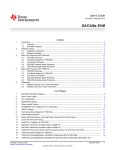


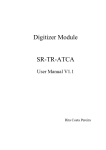
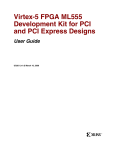






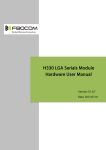
![arXiv:1306.3436v1 [hep-ph] 14 Jun 2013](http://vs1.manualzilla.com/store/data/005779061_1-09962217330e865ae44dd3cb323f6311-150x150.png)

